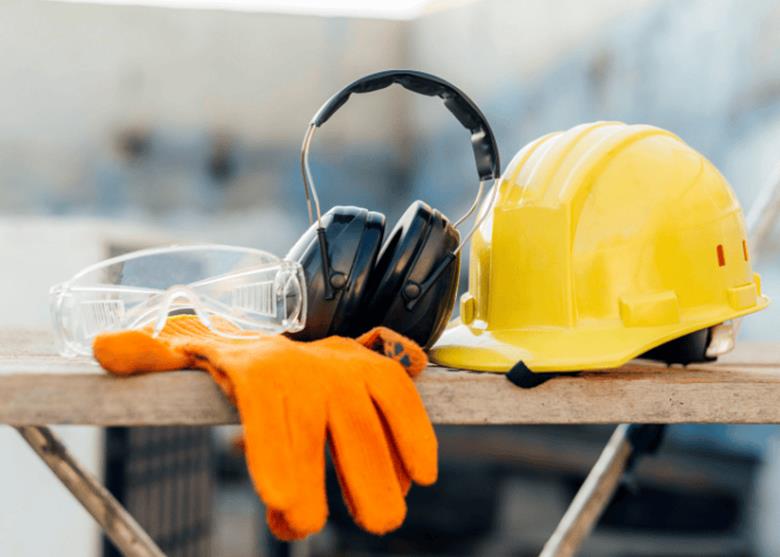Quick Answer: What is Eco-Friendly PPE
Eco-friendly PPE is safety gear made from green materials. These can be recycled, reusable, or able to break down over time. This type of PPE helps cut waste and reduce plastic use. It also supports cleaner workplace practices. Most importantly, it still keeps workers safe and meets all required safety rules.
Workplaces are changing fast. Many companies now try to stay safe and protect the planet. Personal protective equipment (PPE) is part of this change. In the past, PPE was only about safety. Today, it also connects to goals like cutting waste and lowering carbon use.
More industries want cleaner ways to work. They face new rules, new pressure, and new public expectations. This has pushed many of them to choose eco-friendly PPE. These products help workers stay safe while also reducing harm to the environment.
Why Green PPE Matters Today
PPE is still a must in many fields. Workers in building sites, factories, labs, clinics, and warehouses use items like gloves, masks, hard hats, and goggles to stay safe.
But old-style PPE has problems. It often uses:
- Plastic made from petroleum
- Raw materials that cannot renew
- Single-use designs that create piles of waste
- Production methods that use a lot of energy
During COVID-19, these issues grew worse. The world used billions of masks, gloves, and gowns. Much of this ended up in landfills, oceans, or open dumps. This made companies look for better options.
Eco-friendly PPE helps solve this problem. It uses safer, greener materials. Some items can last longer. Others break down more easily. Many can be reused or recycled. These products still meet safety rules but create less waste and use fewer resources.
Key Benefits of Eco-Friendly PPE
Lower Impact on the Environment
Many old-style PPE items use plastics and rubber that stay in landfills for many years. Green PPE uses safer materials. These can come from plants, recycled items, or other renewable sources. Many of them break down faster or can be made into new products.
For example:
- Gloves made from natural rubber or biodegradable materials
- Safety gear made from recycled polyester or reused fibers
These choices help cut waste and support a cleaner, circular system.
Better for Worker Health and Comfort
Eco-friendly PPE is safe for workers too. Some old materials can release chemicals or cause skin issues. Green PPE often avoids harsh additives. It can also help workers who react to latex or fabrics that trap heat.
Many new designs are light, cool, and easy to wear. They let air flow and fit better. This can improve comfort and even help workers stay focused and productive.
Saves Money Over Time
Some green PPE costs a bit more at first. But it can save money later because it lasts longer and can be used many times.
Examples include:
- Stronger gloves that last longer
- Washable coveralls
- Reusable eye protection
These items cut down how often companies need to buy new gear. They also help reduce waste and disposal costs.
Support for Corporate Sustainability Goals
Many companies now report on ESG goals. Using eco-friendly PPE helps them track real progress. It can show gains in:
- Less waste
- Lower carbon emissions
- Better, safer sourcing
- Reduced use of new raw materials
These steps help build trust with customers, workers, and partners who care about the environment.
Types of Eco-Friendly PPE Used Today
The market for green PPE is growing fast. Many new options are now common at job sites.
Biodegradable Gloves
These gloves use plant-based materials or natural latex. They break down faster than old nitrile or vinyl gloves.
Recycled Protective Clothing
These include coveralls, jackets, and aprons made from recycled polyester or reused fabrics.
Recyclable or Modular Respirators
Some respirators now have parts you can replace. Other models use recyclable materials. Both help reduce single-use waste.
Durable, Reusable Eye Protection
Many safety glasses and goggles now use strong, recyclable plastics. They last longer and cut down on trash.
All of these products still meet safety rules from groups like ANSI and OSHA.
Traditional PPE vs. Eco-Friendly PPE
| Feature | Traditional PPE | Eco-Friendly PPE |
|---|---|---|
| Materials | Mostly plastic, PVC, nitrile, synthetic rubber | Plant-based materials, recycled polyester, natural rubber |
| Environmental Impact | High waste; slow to break down | Lower waste; biodegradable or recyclable options |
| Comfort | Can trap heat or cause irritation | Often more breathable and skin-friendly |
| Reusability | Many items are single-use | Many items are reusable or long-lasting |
| Cost Over Time | Frequent replacements increase costs | Longer lifespan reduces long-term expenses |
| End-of-Life Options | Mostly landfill | Recyclable, biodegradable, or part of return programs |
| Health Concerns | Some may trigger allergies or irritation | Lower chemical exposure; fewer allergens |
| Alignment With Sustainability Goals | Limited | Strong — supports ESG and green initiatives |
How Companies Are Helping This Shift Grow
Businesses play a big part in moving toward green PPE. Many now choose suppliers who use clean materials, open sourcing practices, and products that can be reused or recycled.
For example, The Safety Source LLC offers PPE made from safe, renewable, or recyclable materials. They also sell durable items that last longer and reduce total waste. Even though not all industries have full access to sustainable PPE, strong supplier partnerships help companies bring in greener gear while still meeting safety rules. visit safetysourcellc.com.
Building a More Sustainable PPE Strategy
Switching to green PPE is more than picking new products. A strong plan looks at how the gear is made, how long it lasts, and how it fits into company goals.
A simple, clear strategy includes:
- Checking materials for durability and recycling potential
- Making sure workers get items that fit well and feel good
- Using reuse or take-back programs when possible
- Choosing suppliers who are open about their materials and process
- Linking PPE choices to larger goals like waste cuts and energy saving
These steps help companies make smart choices that boost safety, protect the planet, and improve daily operations.
Looking Ahead: The Future of Sustainable Safety Solutions
New ideas in materials, energy use, and recycling are growing fast. This will lead to better green PPE in the years ahead. Future gear may use plant-based plastics, low-emission production, or modular parts that you can reuse many times.
Eco-friendly PPE is not a short trend. It is part of a long-term shift in how workplaces protect people and the environment. Companies that act now can stay ahead of rules, support worker health, and help build a cleaner future.
Conclusion
Eco-friendly PPE offers a smart way to improve both safety and sustainability. By choosing gear that reduces waste, keeps workers comfortable, and meets safety rules, companies can build safer and greener workplaces.
As more suppliers offer green options and more industries choose cleaner products, sustainable PPE will continue to grow. These choices will help create workplaces that are safer, cleaner, and more responsible for years to come.




